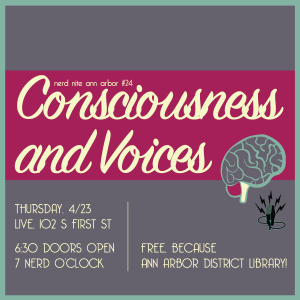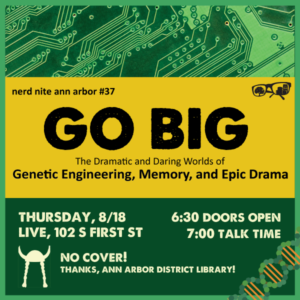
This month, we have a diverse trio of great topics headed your way at NNA2 edition #37!
Aric Schultz returns to the NNA2 stage to give us the scientific skinny on genetically modified organisms. Beloved heckler Kevin Davis is back to talk data storage and perhaps ruin any illusions you may have regarding the cloud. And fellow NNA2 alum Carl Engelke (of the amazing homemade trumpet!) brings us home with his talk on the most epic magical saga of all time – Wagner’s Ring Cycle. Going to be a great night, so grab some friends and a couple of cold ones to join us at Nerd Nite!
When: Thursday, August 18, 2016, doors at 6:30 pm, talks at 7 pm!
Where: LIVE, 102 S First St, Ann Arbor
$$$: Free , thanks AADL!
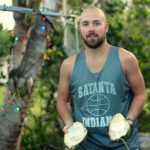
Aric J Schultz: “OMG, GMOs.”
We often hear the term “genetically modified organisms” (GMOs) without much context as to what they are and what they are not. I’ll explain how they are made, plus their application and impact.
About Aric: I am a graduate student in the microbiology department at the University of Michigan Medical School. I study a microscopic parasite, Toxoplasma gondii, in order to learn more about how it causes disease in humans and identify aspects of this infection that could be exploited and used in the treatment of the disease. Outside of the lab I enjoy practicing brazilian jiu jitsu, gardening, and of course science communication. Follow him on Twitter at @aricj10.
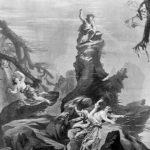 Carl Engelke: “The use of leitmotif in Wagner’s Ring Cycle: A boring musicology talk”
Carl Engelke: “The use of leitmotif in Wagner’s Ring Cycle: A boring musicology talk”
The original “never-ending story,” (okay, so it’s actually 15 hours) Wagner’s epic opera cycle Der Ring des Niebelungen is widely regarded as the best way to thoroughly convince people that they hate opera. But it need not be so! As we cruise through a “brief” synopsis of the plot, we will explore how Wagner’s use of musical motifs neatly ties the storyline together, and how this compositional style has influenced the development of film scores.
About Carl: Carl had many, varied interests throughout the years, and he still sometimes wonders what he wants to do when (if) he grows up. He studied trumpet performance in college at Indiana University and the Royal Academy of Music in London, and performed with the Civic Orchestra of Chicago upon graduation. Currently, as a completely logical next step, he is an MD/PhD student at the University of Michigan Medical School, where he studies how chromatin dynamics influence the development and progression of prostate cancer.
Kevin Davis: “Flipping Bits: The History of Data Storage”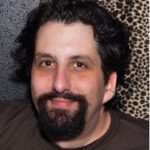
A review of the advancement of data storage and archival technologies, from the Mainframe to the Pokedex.
About Kevin: A SAN Engineer for a Fortune 10 company, Kevin determines the best IT storage solutions, for needs ranging from PowerPoint to Oracle. A 17-year IT veteran, he spends his days hard drive drag racing, writing manuals and procedure guides, reviewing new builds, and overseeing storage operations.
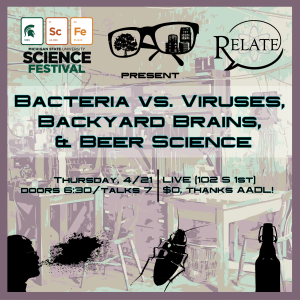 Drink an enlightening brew while you discover bacteria battles and cockroach control at this month’s Nerd Nite Ann Arbor! Come by to hear Ada Hagan tell of the zombie apocalypse that occurs when a certain virus attacks bacteria. Dylan Miller will explain how to take over someone’s free will with DIY neuroscience. And Ryan Engemann will explain scientific development through beer while you order another pint. We are excited to be partnering with the Michigan State University Science Festival this month, so come check out the awesome speakers we’ve got lined up to school you this time.
Drink an enlightening brew while you discover bacteria battles and cockroach control at this month’s Nerd Nite Ann Arbor! Come by to hear Ada Hagan tell of the zombie apocalypse that occurs when a certain virus attacks bacteria. Dylan Miller will explain how to take over someone’s free will with DIY neuroscience. And Ryan Engemann will explain scientific development through beer while you order another pint. We are excited to be partnering with the Michigan State University Science Festival this month, so come check out the awesome speakers we’ve got lined up to school you this time.
When: Thursday, April 21, 2016, doors at 6:30 pm, talks at 7 pm!
Where: LIVE, 102 S First St, Ann Arbor
$$$: NO COVER! cuz Ann Arbor District Library said so
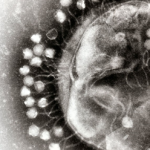 Ada Hagan – Predator vs. Prey: A Micro Tail
Ada Hagan – Predator vs. Prey: A Micro Tail
Bacteria are feared by humans for their ability to cause diseases that can’t always be treated with antibiotics. But do bacteria have a predator of their own? Come learn about the virus that uses its “tail” to prey on bacteria, turning them into zombies. Predator versus prey may be a familiar story, but hear it with some new “micro” characters.
About Ada: Ada Hagan is a doctoral student at the University of Michigan in the department of Microbiology and Immunology. She does recon on the sneaky ways bacteria find nutrients (like iron!) when they are invading our bodies. Ada is a co-founder of the graduate student science communication blog MiSciWriters. Originally hailing from the mountains of East Tennessee, Ada spends her spare time writing, walking her dogs, cooking, and comparing strollers. Follow her on Twitter @adahagan.
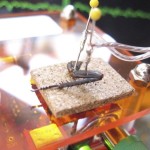 Dylan Miller – The Body’s Electricity: From Cockroaches to You!
Dylan Miller – The Body’s Electricity: From Cockroaches to You!
Have you ever had the desire to lose your free will? Or, alternatively, have you ever had the desire to take someone’s free will? This talk will discuss how Backyard Brains uses DIY-style neuroscience to bring to you direct control, via your muscle electricity, over cockroaches, machines, and even other humans!
About Dylan: Dylan Miller came to Backyard Brains as an undergraduate in neuroscience. He has since graduated from Michigan State University, and now works at BYB as a research scientist and on marketing. He initially joined in order to apply the RoboRoach setup to controlling scorpions, and moved on to manage several other undergraduate DIY-neuroscience projects. He also studies the behavior of scorpions in a separate research lab at MSU. Follow him on Twitter @BraconidaeBaron.
 Ryan Engemann – The Science of Beer
Ryan Engemann – The Science of Beer
Beer has been there from the beginning of the scientific revolution. From providing sanitary nourishment to the development of modern medicine and pasteurization, beer has been an integral influence on the development of science. Join Certified Cicerone® Ryan Engemann and explore this fascinating topic–over a pint, of course.
About Ryan: A nerd by nature, Ryan started working in the craft beer industry in Northern Michigan in 2011. He became the first Certified Cicerone in Northern Michigan and now can be found selling beers and talking science at Brewery Vivant in Grand Rapids. Check out what the brewery is up to on Facebook, Instagram or Twitter @breweryvivant.
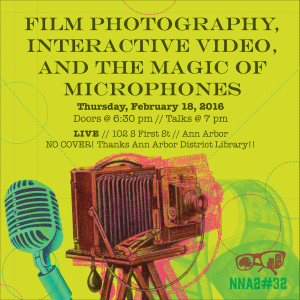
It’s Media Mania Month at Nerd Nite Ann Arbor! We’re focusing in on the life after “the death of film” by exploring the process behind and the art created with non-digital photography with historic camera expert Ross Orr. We’ll hear from Martin Thoburn, an interactive filmmaker who finds endless ways to expand his video-based art beyond the screen. Andy Ross might know more about microphones than any person to ever speak into ours – and he’ll be telling the story of the impact of mic amplification on modern music. Join us for a deep dive into audiovisual awareness, plus drinks, laughs, and a spin on a vintage 35MM Carousel projector.
When: Thursday, February 18, 2016, doors at 6:30 pm, talks at 7 pm!
Where: LIVE, 102 S First St, Ann Arbor
$$$: NO COVER! Courtesy of the Ann Arbor District Library!!
 Ross Orr – Are Film Cameras Dead, and Why Not?
Ross Orr – Are Film Cameras Dead, and Why Not?“Didn’t Kodak go bankrupt?” After the year 2000, sales of photographic film plunged by at least 95%. Yet there’s still a dedicated fringe who appreciate film’s tangible physicality and distinctive look. In a digital age, why are new converts dusting off decades-old, chunky, glass & metal cameras? For this talk we’ll bust out the 35mm Carousel projector and look at examples of why “slow photography” matters even today.
 Martin Thoburn – Beyond the Video Frame
Martin Thoburn – Beyond the Video FrameTake a walk beyond traditional filmmaking and into the world of interactive video art and video mapping. Our journey will go behind the scenes on how this artist’s projects were created from concept to execution. Discover more about the strange world of video beyond the rectangular screen.
About Martin: Martin is a local animator and artist working in a variety of different media. He has produced and directed several short films, both animated and live action. Determined not to be confined to any one medium, Martin continually explores photography, live video mixing, design, collage, animation and motion graphics. Working with both modern and antique technologies sometimes in tandem, his work explores the uniqueness of the medium, technology, and/or tool. He is involved with YPSI24 and the Ann Arbor Film Festival and you can follow him on Twitter @duiceburger, or visit
martin-thoburn.com.
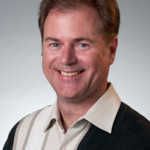 Andy Ross – Music and The Microphone
Andy Ross – Music and The MicrophoneThe invention of the microphone dramatically changed popular music, and allowed for the development of a more personal, intimate and emotional style of singing. We’ll look at, and listen to, this development.
About Andy: Andy is a web and graphic designer, and a widely exhibited artist here in Ann Arbor. He’s also a dedicated amateur musician and singer, and he has taught courses in popular culture and its impact. Find more about him at
andyrossdesign.com or follow him on Twitter @andyrossdesign.

Nerd Nite A2 is all about approaching things from new perspectives this month. Sure our phones are smart now, but let’s consider the value of making other electronic devices intelligent enough to sense and transmit useful information – such as getting a heads up from your fridge before you’ve poured recently-spoiled milk over your cereal. We’ll review the sweeter side of presidential history with a project that re-interprets U.S. presidents as cupcakes, a lens through which even the worst policy decisions can become into melt-in-your-mouth magic. And finally, we’ll think about using social media to encourage voters to get to the polls, instead of as a method of sharing cat videos – and with the November election just behind us, we’ll even get to hear about how well it works! So come hungry for nanotechnology, Commander in Chief-flavored cupcakes, and civic-minded social media and join us for another nerdy good time.
When: Thursday, November 19, 2015, doors at 6:30pm, talks at 7pm!
Where: LIVE, 102 S First St, Ann Arbor
$$$: NO COVER! Courtesy of your pal, the Ann Arbor District Library!!
 Matt DeJarld – How Nano-electronics might allow you to communicate with your refrigerator
Matt DeJarld – How Nano-electronics might allow you to communicate with your refrigeratorImagine having a refrigerator that can tell you when food has spoiled! The next technological revolution will be turning every appliance we use into a smart device. To create these devices, we need tiny sensors to allow the electronics to interact with the environment. Today these sensors are too large or too expensive, but luckily, engineers are working to reduce this sensor size and cost with the help of nano-electronics.
About Matt: Matt is a doctorate student at the University of Michigan. For the past few years, he has worked heavily with semiconductor nanostructures in efforts to improve the future of solar and indoor lighting technologies. In his free time he enjoys hiking with his dog, music, and movies/television.
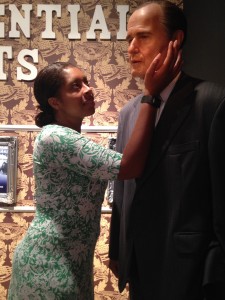 Sherlonya Turner – 35 Offbeat Ways of Looking at the POTUS
Sherlonya Turner – 35 Offbeat Ways of Looking at the POTUSSometimes the President of the United States seems larger than life. This humorous talk will bring them down to size with anecdotes that present them as more man than myth. The Head of State Cakes project, in which a cake recipe is created in honor of each president, is what happens when you cross a lifelong interest in presidential history with a love of baking. The results are not only tasty, they’re pretty fun to talk about.
About Sherlonya: Sherlonya has an all-consuming and perhaps overwhelming love for the presidents. She’s interested in them less as politicians and more as men. Her history degree helps her put things in context. Her library degree gives her research tips and tricks. Her love of cooking has inspired her to create a tribute cupcake for each US President; see them all at
headofstatecakes.com. Her son is tired of hearing her talk about Lyndon Baines Johnson, her president boyfriend.
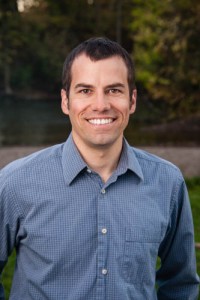 Sam Firke – Twitterbot Says Vote!
Sam Firke – Twitterbot Says Vote!There are 90,000 registered voters in Ann Arbor. Most don’t vote. I built a Twitter bot that matched voter names to Twitter accounts, then sent reminders to vote in local elections. Learn more about the problem, the project, and how it worked!
About Sam: Sam is a data analyst at an education nonprofit and a former high school math teacher. He’s active in local politics, makes things, and raises a couple of small nerdlings. He’s involved with the Ann Arbor Brewers Guild (
aabg.org) and you can find him on Twitter at @samfirke.
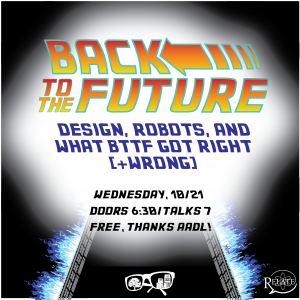
This month’s event takes us Back to the Future, because when BTTF 2 came out in 1989, October 21, 2015 seemed pretty darn future. Since we’re living in the future, we’ll talk about what the future looks like, or more accurately, what designers thought it would look like. We’ll find out the science behind instructing our (eventual) personalized robot servants to make our martinis just right. And finally, we’ll get hardcore about the Back to the Future trilogy, checking out how accurate their vision of the future really was. So power up your flux capacitors and get here for a flashback to the future!
When: Wednesday, October 21, 2015, doors at 6:30pm, talks at 7pm!
Where: LIVE, 102 S First St, Ann Arbor
$$$: NO COVER! Hey, thanks, Ann Arbor District Library!!

Nick Tobier – Where’s My Hoverboard?
Ready to assume vivid astro focus? We’ll follow the evolution of space-age design from the euphoria and optimism of the 1950s to the more cynical ‘70s, and see how artists’ conceptions of the future have influenced history and in turn, our society.
About Nick: Nick is an Associate Professor at the Stamps School of Art and Design and the Center for Entrepreneurship in the College of Engineering at the University of Michigan. With a background in sculpture and landscape architecture, Nick has long been interested in the social lives of public places and his work has been seen at the everywhere from the Edinburgh Fringe Festival to Detroit’s Brightmoor neighborhood.
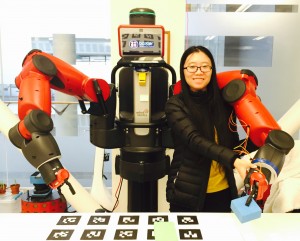
Zhen Zeng – Everyone Can Teach a Robot
Ever felt too busy to do the laundry or too tired to cook? What if a robot could help you with all of this someday in the future? Developments in robotics are bringing this dream closer to reality by making robots that can imitate people and learn new actions. One day, you may be teaching your own robot how to make your favorite cocktail!
About Zhen: Zhen is a PHD student at the University of Michigan in Electrical Engineering, with a focus on robot object manipulation. When she’s not teaching Baxter the Robot to see, move, and think, she enjoys volleyball and card games.
 Eli Neiburger – Back to the Future of Back to the Future
Eli Neiburger – Back to the Future of Back to the Future
It’s the Future today! October 21, 2015 is the day Marty McFly visits in Back to the Future 2. Let’s take a detailed look at what they thought today would be like 30 years ago, and see what they missed, and what they nailed. READ MY FAX!
About Eli: Eli is Deputy Director at the Ann Arbor District Library and has given lots of talks across the US, Europe, Australia and New Zealand, but this is his very first talk that’s not about libraries! You may have seen him leading the Nintendoland Family Band at the Water Hill Music Festival. You can follow him on Twitter at @ulotrichous.
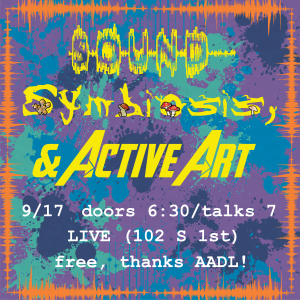
This month our topics go from down in the dirt (plant and fungi symbiosis!) to long-distance sounds to local examples of art in action. What our three featured nerds have in common, however, is that they each have a passion for their topic and want you to understand it too! So, whether you consider yourself an art aficionado, a sound geek, a plant-lover or beyond, we’ve got plenty of new stuff for you to pick up while you’re tipping back a beer. Grab a drink, grab a friend, and we’ll see you at LIVE on September 17th!
When: September 17, 2015, doors at 6:30 pm, talks at 7 pm!
Where: LIVE, 102 S. First St. in Ann Arbor
$$$: No cover! Big thanks to the Ann Arbor District Library!
Brian Worthmann — The Sound Heard ‘Round the World’
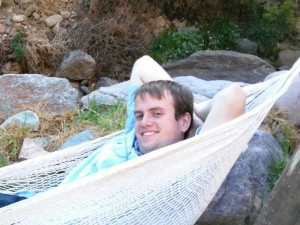
In our daily lives, we’re used to sound traveling as short as a fraction of an inch (like music from headphones) to as far as several hundred yards (like a football game heard several blocks away). But, over even larger distances, like tens, hundreds, or even thousands of miles, sound can do some very weird and unexpected things. We’ll talk about what sound does, why it does it, and how those surprising behaviors may have influenced the course of history.
About Brian: Worthmann is a PhD student at U of M in Applied Physics studying underwater acoustics and signal processing and was a participant in the
RELATE 2015 workshop. When not doing underwater acoustics research, he can be found learning, teaching, or binge-watching Netflix.
Alex Taylor — Underground Alliances
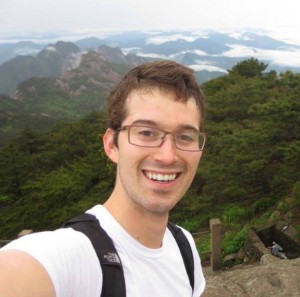
Nearly all plants form intimate symbiotic partnerships with fungi called Mychorrhizae. These fungi grow in elaborate webs through the soil, and then into the plan roots, growing even inside the plant cells, where the plant and fungus have struck a fabulously successful deal. The terms of this deal are straightforward: a trade of sugar for mineral nutrients that plays to the strengths and weaknesses of each partner. Mycorrhizae helped early plants get a toehold on land, and to this day, the vast majority of plants across the globe thrive thanks to their fungal partners. The world would be a barren place without this ancient and strange symbiosis.
About Alex: Alex is a Ph.D student in Ecology and Evolutionary Biology, studying how plants evolved the ability to recognize and partner with bacteria and fungi in the soil. Most days, this involves sitting at a computer and running algorithms on the genome sequences of different plants. He also loves talking and writing about the spine-tingling majesty of science, and co-founded the blog “Thought and Awe” to do just that. In his spare time, Alex is into camping, gardening, and talking about the big stuff over a beer. Find him on Twitter at @ATayters.
Brenda Oelbaum – Stitch and Bitch: Hopefully a Comedy
Oelbaum, current President of the
National Women’s Caucus for Art, will share some of the ins and outs of her work in organizing a national arts non-profit and what that has to do with embroidering little black velveteen bags with gold numbers while she juggles those challenges and troubles. She invites members of the audience to fill the bags she provides with a problem to add to the mound of problems in her upcoming social practice performance and installation at POP-X Ann Arbor.
Pens and paper will be provided for attendees to write down their most troubling problem to contribute to her already heavy load. Contributors can then come by the installation running October 15-25, read some problems of others, and decide if they want to take their own bag back, or buy someone else’s problem as a souvenir.
 We have an awesome trio of talks on tap this month! Laser artist Mike Gould gives us the skinny on building amazing light displays (with demos!), tech wizard Dave Strenski takes us on a historical tour of uber-powered computers, and urban planner Margi Dewar talks about the future of Detroit. You don’t want to miss it! So grab a friend, grab a beer, and cool your heels at Nerd Nite Ann Arbor!
We have an awesome trio of talks on tap this month! Laser artist Mike Gould gives us the skinny on building amazing light displays (with demos!), tech wizard Dave Strenski takes us on a historical tour of uber-powered computers, and urban planner Margi Dewar talks about the future of Detroit. You don’t want to miss it! So grab a friend, grab a beer, and cool your heels at Nerd Nite Ann Arbor!
When: July 23: 6:30 doors, 7pm nerd stuff
Where: LIVE, 102 S First St, Ann Arbor
$$$: NO COVER because Ann Arbor District Library!
Runs with Lasers – Mike Gould
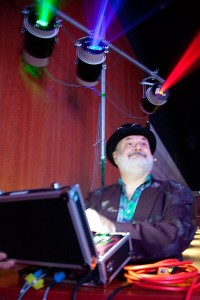 Local laser artist Mike Gould discusses his recent experiences with the Illuminatus Lasers Troupe, including:
Local laser artist Mike Gould discusses his recent experiences with the Illuminatus Lasers Troupe, including:
– The Quest for Mystic Fire – Lasers at Saline Celtic Festival (because, of course).
– Talks with Lasers lecture/demo to educate kids and families to the wonders of coherency.
– Tetraptych: 4 Panels, 12 Lasers, One Wall art piece for DLECTRICITY 2014
– L is for Laser, his science museum piece.
Mike has also done lasers for the UM Stadium half-time show during a night game. (Notre Dame, we won). He’s go an upcoming entry into the Ann Arbor Art Center’s tech+art exhibit, and has made appearances at various Maker Faires, Art Prize, Ignite, FoolMoon, etc.
For more about Mike, wander over yonder:
Calculating 10^18 Results per Second – Dave Strenski
 The world of high performance computing is changing. This presentation will run through a short history of computing highlighting the different types of computations used in computing’s past, including vectorization, parallelization, accelerators, and reconfigurable computing. From this historical perspective, the discussion will lead to what’s needed for the future to reach exa-scale (10^18 floating point operation per second) computing. It will also cover the types of applications that need exa-scale computing and the merging of high performance computing and data analytics. More deets: www.Cray.com and www.SolarYpsi.org.
The world of high performance computing is changing. This presentation will run through a short history of computing highlighting the different types of computations used in computing’s past, including vectorization, parallelization, accelerators, and reconfigurable computing. From this historical perspective, the discussion will lead to what’s needed for the future to reach exa-scale (10^18 floating point operation per second) computing. It will also cover the types of applications that need exa-scale computing and the merging of high performance computing and data analytics. More deets: www.Cray.com and www.SolarYpsi.org.
Detroit: Planning a City After Abandonment – Margi Dewar

Urban planning as a field focuses on managing development to shape the effects of growth on cities. But what can planners do in cities like Detroit where developing, redeveloping, rebuilding, and revitalizing are
not possibilities? I will lay out directions with a few examples for a different kind of urban planning.
 Summertime and the livin’ is nerdy… June brings us an awesome trio of talks about the badass history of roller derby, the development of the science story from bright idea to blog article, and a primer on the last 75 years of history in Ypsilanti. Gonna be a great edition of NNA2, so grab a friend, grab a drink, and join us for an awesome Thursday night!
Summertime and the livin’ is nerdy… June brings us an awesome trio of talks about the badass history of roller derby, the development of the science story from bright idea to blog article, and a primer on the last 75 years of history in Ypsilanti. Gonna be a great edition of NNA2, so grab a friend, grab a drink, and join us for an awesome Thursday night!
When: June 18: 6:30 doors, 7pm nerdins
Where: LIVE, 102 S First St, Ann Arbor
$$$: NO COVER! Ann Arbor District Library rulez!
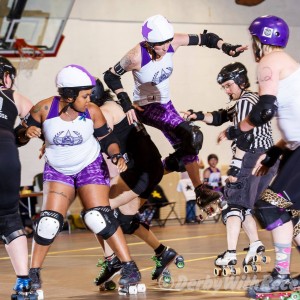
Susan B. Slamthony and Queen McLightning — A Short History of Nearly Everything Roller Derby Related
Learn the history of roller derby from the 1920s to today, how the game is played and what’s been happening for the sport locally.
Find ’em elsewhere, too: @a2derbydimes or Facebook:
AnnArborBrawlStars, A2D2YV, A2D2ABC
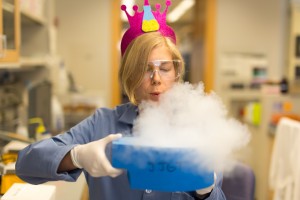
Plot twists and Revelations: The Story of Science — Veronica Taylor
When you think of science, what comes to mind? For many people, science springs to mind a collection of facts they tried to memorize for various exams. I want to show another side of science: the story of science. In my talk, we’ll take a short journey through the drama of the scientific process and learn about how scientific ideas evolve and are communicated. I hope you will leave with a new appreciation of science and what we really learn from research.

Ypsilanti History — James Mann
Local historian James Mann returns for his fourth Nerd Night talk, and will be speaking on his new book, Ypsilanti, part of the Images of Modern America series from Arcadia Publishing. This is a picture history of the city of Ypsilanti from the 1960’s to the present. James will speak on how Ypsilanti got the most easily misspelled name in the state, the Michigan Murders, and tell the true story of Rosie the Riveter. There is more to Ypsilanti than the Water Tower! Copies of Ypsilanti will be available for purchase.
This month our Nerd Nite speakers will be talking about things that most of us have (at least most of the time). We’ll let a philosophy scholar-turned neuroscientist walk us through his work on consciousness, and a seasoned radio vet remind us why our own voice might just be more important than we’ve ever considered.
So get a bit mindful, join us on Thursday, April 23 at LIVE for Nerd Nite A2 #24, and use that voice of yours to say hello to a bunch of other great, curious nerds!
When: April 23rd, 2015, doors at 6:30pm, talks at 7pm!
Where: LIVE, 102 S First St, Ann Arbor
$$$: NO COVER! Thanks a million, Ann Arbor District Library!!
Brian H. Silverstein – The Science of Consciousness
Ever wonder what it means to be conscious? Consciousness defines our very existence – we experience it every waking (and dreaming) minute of every day, yet it is one of the most challenging phenomena to define. For thousands of years, humans have posited theories of awareness. Over the last half century, we have finally developed the tools to empirically investigate consciousness.
In this talk, we’ll learn about how theories of consciousness have developed over time and see an overview of the cutting edge methods scientists use to create empirically informed models of consciousness. Brian is affiliated with the
Center for Consciousness Science at the University of Michigan.
Brian H. Silverstein:
Brian has been studying consciousness for the better part of a decade. Starting from philosophy, he eventually decided to empirically test theories instead of just talking about them. Now he uses computational neuroscience to study the neurobiology of consciousness with the Center for Consciousness Science at the University of Michigan. Originally from New York, he now lives in Michigan. When he’s not sciencing, he’s usually drawing, cooking, or playing the piano poorly.
Kyle Norris – Why you should fall in love with your own voice
The relationship we have with our voices is incredibly intimate. And also very powerful. Our voices are an underutilized tool that can help us do a lot of things and can help us make connections with other people. I’ll help everyone think about their voice in a new way, and show them some good tips for maximizing this personal and powerful tool.

March may have roared in like a lion, but the awesome nerds of Ann Arbor are howling back! Up this month: the history of cataract surgery, how to be a great DJ in 5 simple steps, and how 80s cartoons can teach you to be a better writer.
Friends, beers, and nerdery–can you find a better Thursday night? See you this month at Nerd Nite Ann Arbor!
When: March 19, 2015, doors at 6:30pm, talks at 7pm!
Where: LIVE, 102 S First St, Ann Arbor
$$$: NO COVER! Thanks a million, Ann Arbor District Library!!
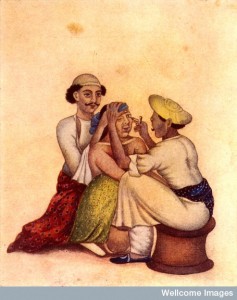 Zvi Kresch – Sweet is the Light: Curing Blindness Through the Ages
Zvi Kresch – Sweet is the Light: Curing Blindness Through the Ages
Cataracts are the most common cause of blindness on the planet. Long before anesthesia or antiseptics, cataract surgeries were being performed. This talk will touch on the evolution of the procedure from ancient to modern times.
A few of the questions we’ll answer along the way: Why is the sky blue? Is staring at an eclipse really bad for your eyes? Where do orange carrots come from?
About Zvi Kresch:
Zvi Kresch is a faculty member at the UM Kellogg Eye Center. Prior to coming to UM, he spent a year traveling with his wife and practicing ophthalmology abroad with the The Himalayan Cataract Project. He was exposed to different types of cataract surgery and became very interested in the procedure’s origins. When not studying eyeballs, Zvi enjoys chess, making kombucha and playing the harmonica.
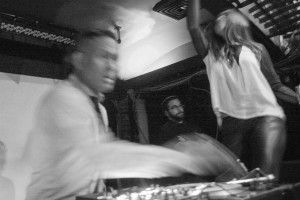 Rolando Calip, Jr. AKA DEFTMIX – Elements of Style – How to be a Great DJ in 5 Simple Steps
Rolando Calip, Jr. AKA DEFTMIX – Elements of Style – How to be a Great DJ in 5 Simple Steps
In this talk, DEFTMIX uses concepts from Strunk and White’s classic college textbook, “Elements of Style” to distill 5 Simple Steps to becoming a “Great DJ”.
About Rolando Calip, Jr. AKA DEFTMIX:
Rolando Calip, Jr. is a 20 year DJ veteran residing in Ann Arbor, Michigan. He has spent the last 2 years as the Nightlife Director/Saturday DJ Resident for Live Nightclub. Before moving to Ann Arbor in 2011, he lived in NYC for 10 years; DJing, curating music for hospitality groups, and managing DJs. Music has taken him all over the world; most recently Manila, Philippines; where he performed at Black Market Nightclub on NYE 2015. Follow him on Instagram: @deftmix
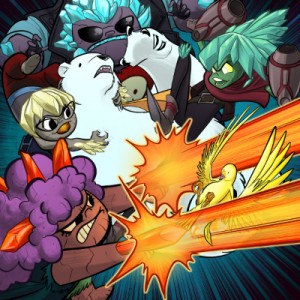 Jerzy Drozd – Knowing is Half the Battle: What 80s Cartoons REALLY Teach Us
Jerzy Drozd – Knowing is Half the Battle: What 80s Cartoons REALLY Teach Us
80s cartoons were nothing more than half-hour toy commercials with a sprinkle of moralistic preaching to sweeten the pill for parents, right? Cartoonist Jerzy Drozd explores 5 writing tips one can glean from a closer examination of the cartoons of our youth.
About Jerzy Drozd:
Jerzy Drozd is one of the artists of The Warren Commission Report. He leads cartooning workshops for children and teens in libraries and schools; podcasts prolifically about comics and how to make them at ComicsAreGreat.com, KidsComicsRevolution.com, and LeanIntoArt.com. He wrote and drew the graphic novel The Front, has worked on Antarctic Press’s Ninja High School and PPV: Pay- Per-View (which he cocreated with Tom Root, writer of Cartoon Network’s Robot Chicken), and has drawn special projects for Marvel Comics, Glencoe/McGraw-Hill, VIZ Media, and others. He lives in Ann Arbor with his wife and two cats.
 Carl Engelke: “The use of leitmotif in Wagner’s Ring Cycle: A boring musicology talk”
Carl Engelke: “The use of leitmotif in Wagner’s Ring Cycle: A boring musicology talk”






























